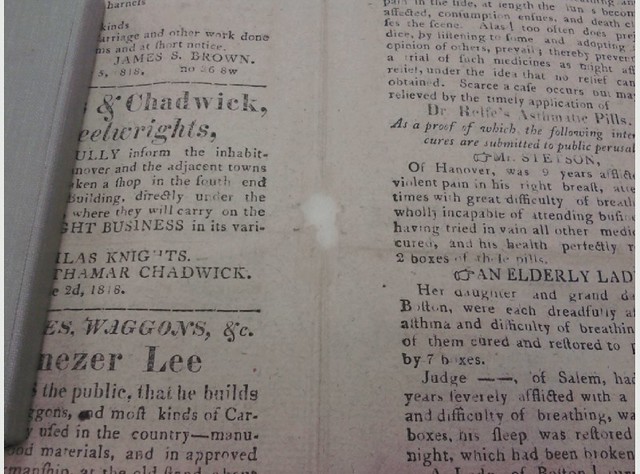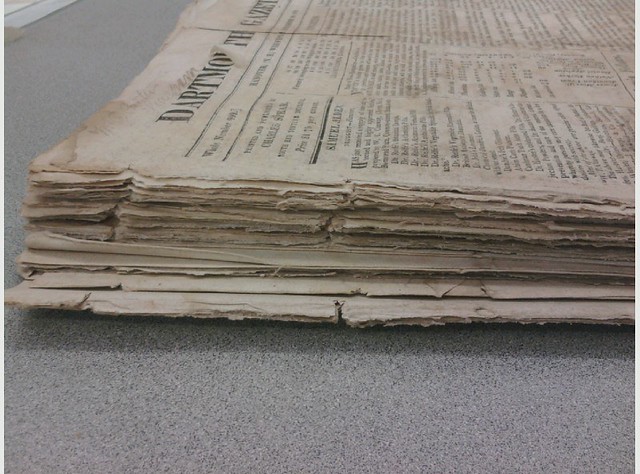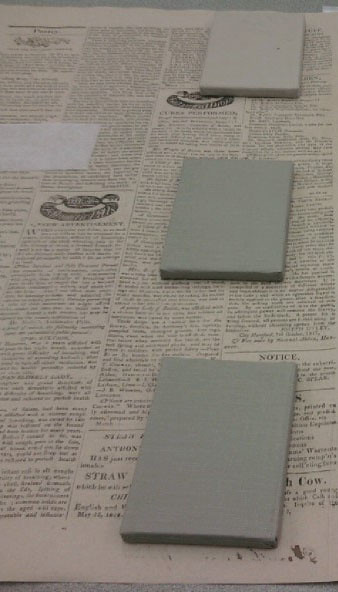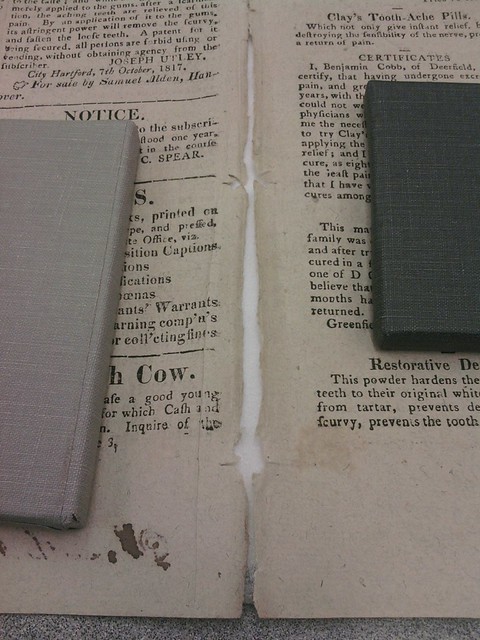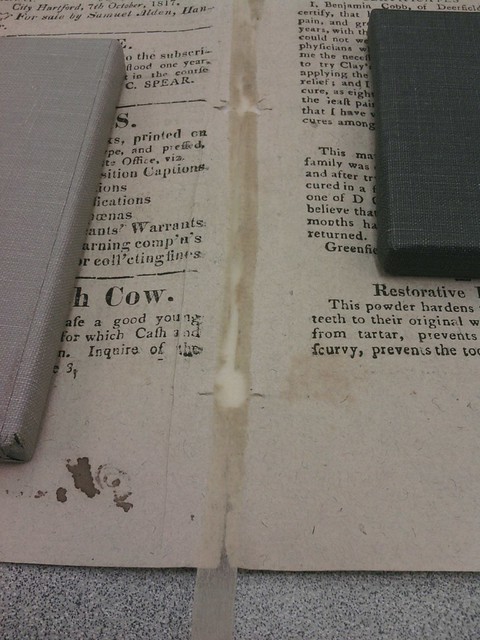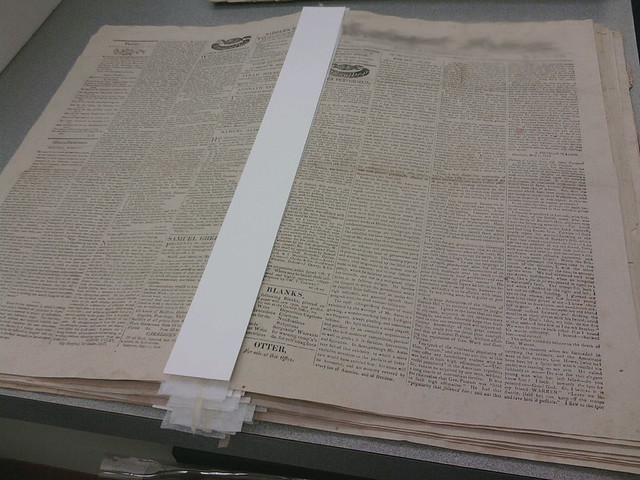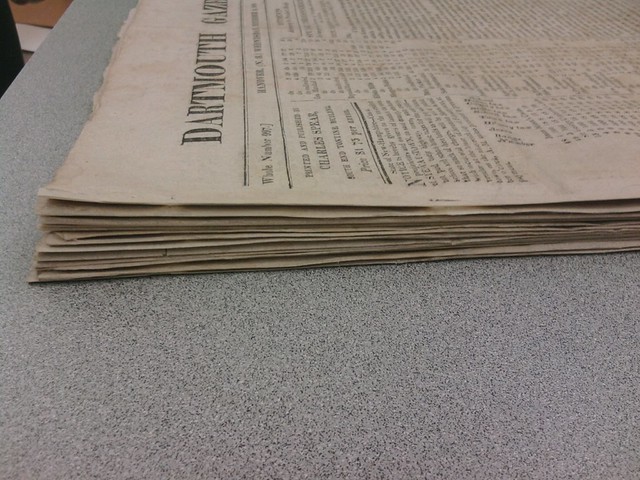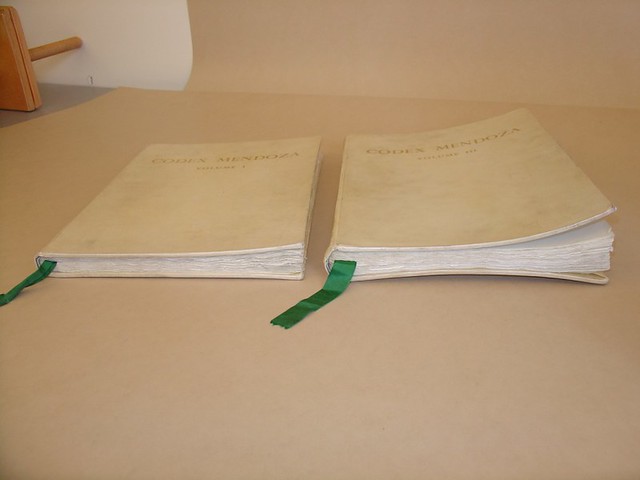
We often get books with boards that seem to be ready to fly off the book because the boards are bending out of shape. In this case we got a set of vellum covered books that had been exposed to a humid environment. One of the books was clearly affected as you can see from the photo below.
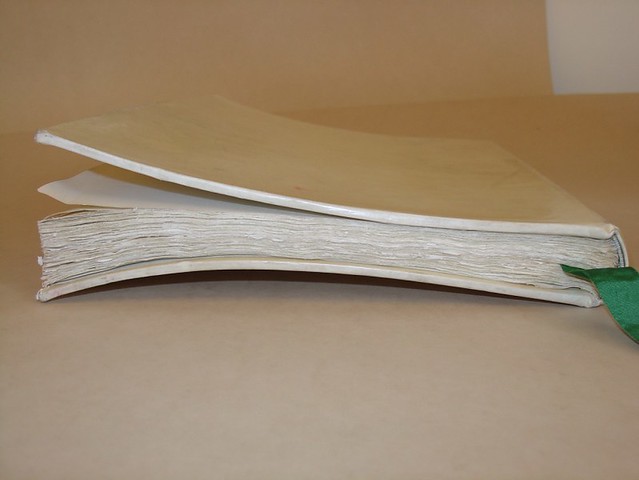
The boards were flattened by lightly dampening the outside of the cover in tandem with lining the inside with two layers of bond paper that had been wetted and pasted out. It was then allowed to dry under pressure, with frequent fresh blotter changes.
The big question was: “Will the volume maintain its new sleek profile?" To insure that it would, I designed a quick and simple “straight jacket” using 40 and 20 point board, book cloth and Velcro. With this design the spines remain exposed and the Velcro straps ensure that the volumes remain flat.

Open, showing the cover made from the 40 point and the inner flaps
made from the 20 point board, with the cloth straps.
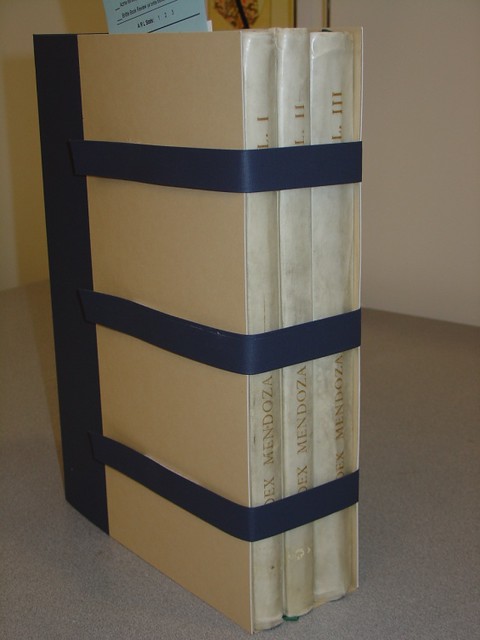
Closed, ready for shelving.
Written by Deborah Howe


